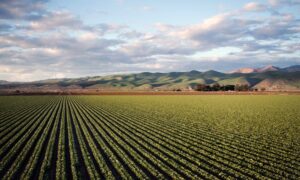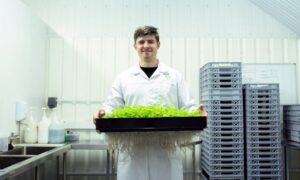Farmers everywhere are running into a new kind of uncertainty. Seasons that once followed familiar patterns now behave unpredictably. Fields that used to be reliable suddenly struggle under heat, dry spells, surprise downpours, or shifts in soil chemistry. Nutrient issues show up where they never did before. Water can be scarce one week and overwhelming the next. And increasingly, even small stress events seem to snowball into real yield losses.
These forces the quiet, invisible ceilings that cap plant performance are what agronomists call limiting factors. According to the analysis that informed this article, they include anything that restricts growth: nutrient imbalance, soil degradation, salinity, heat spikes, erratic moisture, weak root development…the list goes on. Once a limiting factor sets the upper boundary for a field, no number of late-season inputs can push yields beyond that point.
The future of agriculture may depend less on adding more to the system and more on removing these constraints before they quietly steal yield.
Below are five global, publicly traded companies addressing limiting factors from different angles from genetics and climate intelligence to soil management, precision equipment, and plant nutrition.
1. Corteva Agriscience (NYSE: CTVA) Genetics Designed for Stress Resilience
Some limiting factors are tied directly to a plant’s genetic makeup: how well it can tolerate drought, heat, nutrient stress, or interrupted rainfall. Corteva focuses on developing hybrids and varieties that maintain productivity even when conditions swing outside the ideal range.
Its seed traits improve water-use efficiency, support deeper and stronger roots, and help plants stay productive through stress windows such as heat during pollination or dry spells during grain fill. These are challenges that management alone can’t fully overcome.
By expanding the biological resilience of crops, Corteva gives growers a wider safety margin in seasons that don’t behave like the historical average.
2. ICL Group (NYSE: ICL) Nutrition Tools That Reduce Early Growth Constraints
One of the first places limiting factors show up is in early nutrient availability. Crops that start out with uneven or insufficient nutrition rarely recover their full potential. ICL develops plant-nutrition technologies aimed at supporting crops during the early stages when roots, uptake efficiency, and stress tolerance are established.
Its controlled-release fertilizers and specialty formulations help maintain a steadier supply of key nutrients, especially in soils with inconsistent moisture or variable fertility. By improving root development and nutrient access, ICL helps minimize early-season deficiencies, the kind that quietly reduce yield long before farmers see any obvious symptoms.
These solutions don’t erase environmental stress, but they give crops a stronger base to handle whatever the season delivers.
3. IBM (NYSE: IBM) Predictive Climate Tools That Reveal Stress Before It Arrives
Uncertainty itself has become a major limiting factor. It’s not just the big weather events, it’s the timing shifts: a heat spike during a sensitive stage, a sudden drop in soil moisture, an unexpected frost.
IBM’s Environmental Intelligence Suite helps farmers anticipate those risks. The platform provides forecasts and analytics on heat stress, evapotranspiration, moisture deficits, and frost potential all factors that influence nutrient uptake, irrigation timing, and growth stages.
With better visibility into when and where stress might hit, growers and agribusiness can adjust before yielding potential slips away.
4. Deere & Company (NYSE: DE) Precision Tools That Address Soil and Water Constraints
Not all limiting factors come from climate. Many originate in the field itself: compaction, uneven nutrient zones, inconsistent moisture, or poor soil structure.
Deere’s precision technologies have variable-rate tools, sensing systems, and equipment designed to protect soil integrity help farmers manage those hidden constraints. By aligning water, fertilizer, and other inputs with the needs of each specific zone, Deere helps crops grow more uniformly across a field.
Addressing these in-field inconsistencies reduces wasted resources and keeps small problems from becoming yield-limiting ones.
5. Danone (EPA: BN) Regenerative Practices That Restore Soil Capacity
Declining soil health is one of agriculture’s most serious limiting factors. Danone has taken an unusually active role for a food company by supporting regenerative farming across its supply chain.
Working with producers on multiple continents, Danone Backs practices that improve soil structure, increase organic matter, enhance microbial activity, and strengthen water-holding capacity. Healthier soils buffer crops against drought, heavy rainfall, and nutrient stress three of the most common global yield limiters.
Regenerative practices don’t stop climate events, but they help the land absorb them with fewer losses.
Why These Companies Matter: Limiting Factors Are Now the Central Challenge
The analysis behind this article makes a clear point: agriculture’s biggest threats today aren’t always pests, weeds, or even input prices. The most damaging constraints are the structural and environmental ceilings that set crop potential early often before growers notice anything is wrong.
The companies highlighted here address those ceilings from different sides:
- ICL strengthens early nutrition and root development.
- Corteva builds genetic resilience into the seed itself.
- IBM predicts environmental stress before it materializes.
- Deere manages field-level variability that restricts growth.
- Danone rebuilds soil systems so they can withstand pressure.
Together, they reflect what the next era of agriculture requires: not only higher productivity, but greater stability.
Conclusion: The Future of Farming Depends on the Constraints We Remove
Agriculture has always faced risk, but today’s challenges are quieter and more structural limits that form long before harvest decisions are made. The future of food production will be shaped by how effectively we remove those limits, not by how much more we apply.
The companies outlined here are helping farmers do exactly that. By addressing the biological, environmental, and structural factors that restrict crop potential, they are building a more resilient food system in an increasingly unpredictable world.



































